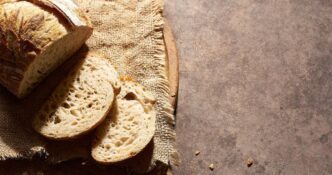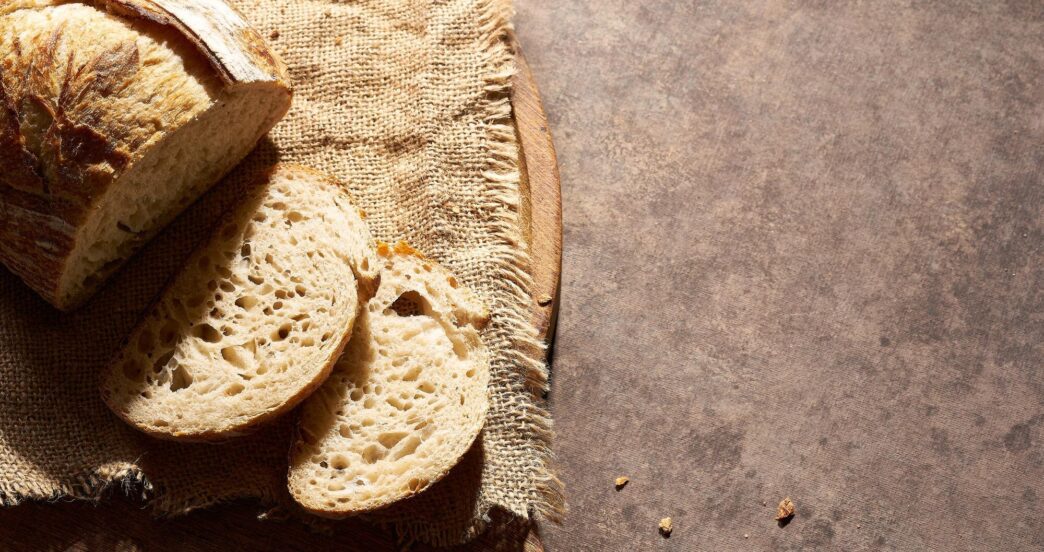A Quick Takeaway
The Story Behind the Trend
How to Make It Work for You
The Community View
For individuals navigating celiac disease, gluten sensitivity, or those simply seeking diverse dietary options, unlocking the secrets to delicious and healthy gluten-free bread is a culinary game-changer. This guide reveals the “what,” “why,” and “how” of crafting satisfying loaves without gluten, offering practical advice and insights into the specific flours and techniques required to achieve excellent texture and flavor. By understanding the unique properties of alternative ingredients and mastering key baking principles, anyone can enjoy wholesome, homemade bread that supports their health goals without compromising on taste.
Understanding Gluten and Its Impact
Gluten is a family of proteins found in wheat, barley, rye, and triticale. It acts as a binder, providing elasticity and structure to dough, allowing bread to rise and achieve its characteristic chewy texture.
While harmless for most, gluten triggers an immune response in individuals with celiac disease, damaging the small intestine and impairing nutrient absorption. Others experience non-celiac gluten sensitivity, leading to symptoms like digestive distress, fatigue, and brain fog.
Who Needs Gluten-Free?
Primarily, those diagnosed with celiac disease must adhere to a strict, lifelong gluten-free diet to prevent serious health complications. Individuals with diagnosed non-celiac gluten sensitivity also benefit significantly from avoiding gluten to alleviate their symptoms.
Beyond medical necessity, some people choose a gluten-free diet for perceived health benefits or to explore diverse whole grain options. However, it is crucial to ensure a balanced nutritional intake, as many commercial gluten-free products can be low in fiber and nutrients.
The Challenges of Gluten-Free Baking
Baking without gluten presents unique challenges because gluten is responsible for the elasticity and structure that give traditional bread its chewiness and ability to rise. Without it, doughs can be crumbly, dense, or lack the desired airy texture.
Replicating these qualities requires a careful blend of alternative flours, starches, and binders. Each gluten-free flour has distinct properties, necessitating thoughtful combinations to achieve a balanced result.
Essential Gluten-Free Flours and Starches
Successful gluten-free bread relies on a strategic combination of different flours and starches, each contributing unique characteristics to the final product. A single gluten-free flour rarely works well on its own.
Primary Flours
Brown rice flour, white rice flour, and oat flour (certified gluten-free) often form the base of many recipes, providing a neutral flavor and good structure. Almond flour adds protein and a moist crumb, while sorghum and millet flours contribute a pleasant, slightly sweet, or nutty taste and whole-grain nutrition.
Buckwheat flour, despite its name, is naturally gluten-free and offers a robust, earthy flavor and good fiber content. Teff flour is another nutritious option, providing a slightly malty taste and dense texture.
Starches for Structure
Starches like tapioca starch, potato starch, and cornstarch are vital for improving the texture of gluten-free bread. They help create a lighter, softer crumb and prevent the bread from becoming too dense or crumbly.
These starches absorb moisture, contributing to the dough’s workability and the bread’s tenderness. They are usually used in smaller proportions compared to primary flours.
Binders for Elasticity
Without gluten, binders are essential to provide the necessary elasticity and prevent the bread from falling apart. Xanthan gum is a popular choice, mimicking gluten’s ability to create structure and improve crumb.
Psyllium husk powder is another excellent binder, adding fiber and helping the dough hold together and retain moisture. A good gluten-free bread recipe will specify the correct amount of these binders, as too much can make the bread gummy.
Key Principles for Successful Gluten-Free Bread Making
Achieving consistently good gluten-free bread involves more than just substituting flours; it requires attention to specific techniques. Accurate measurement is paramount, as the balance of flours, starches, and liquids is very delicate.
Using a blend of 2-4 different gluten-free flours, along with a starch and a binder, typically yields the best results. Gluten-free doughs often require more hydration than traditional wheat doughs, so don’t be surprised if the mixture seems wetter.
Allowing the dough to rest after mixing helps the flours hydrate fully, improving texture. Baking at the correct temperature and for the specified duration is also crucial to ensure the bread is cooked through and develops a good crust without drying out.
Delicious and Healthy Gluten-Free Bread Recipes
The world of gluten-free bread is far more diverse than many realize, extending beyond simple sandwich loaves to include flavorful quick breads and enriched varieties. Look for recipes that incorporate whole gluten-free grains like sorghum, millet, or certified gluten-free oats to boost fiber and nutrient content.
Adding seeds such as flax, chia, or sunflower seeds can further enhance nutritional value, providing healthy fats and additional fiber. Experiment with different flavorings like herbs, spices, or dried fruits to personalize your loaves and make them even more appealing.
Many reliable recipes for gluten-free sandwich bread, focaccia, and even sourdough are available from reputable sources. Always follow the recipe closely, especially regarding ingredient ratios and baking times, to ensure success.
Beyond the Loaf: Enjoying Gluten-Free Bread
Once baked, gluten-free bread often benefits from proper storage to maintain its freshness and texture. It tends to dry out faster than traditional bread, so storing it in an airtight container or freezing sliced portions is highly recommended.
Enjoy your homemade gluten-free bread in countless ways, from classic sandwiches and toast to accompanying soups and salads. Its versatility makes it a staple for anyone seeking a healthy and delicious gluten-free lifestyle.
Embracing a Gluten-Free Lifestyle
Creating your own gluten-free bread is an empowering step towards a more informed and enjoyable diet, whether for health reasons or personal preference. By understanding the science behind gluten-free baking and confidently experimenting with various flours and techniques, you can consistently produce delicious, wholesome loaves.
This journey not only provides satisfying bread but also deepens your connection to the food you eat, ensuring every slice supports your well-being. Embrace the process, savor the flavors, and enjoy the freedom of baking bread that truly nourishes you.







